Mazda MX-5 Miata: Guide to Every Generation
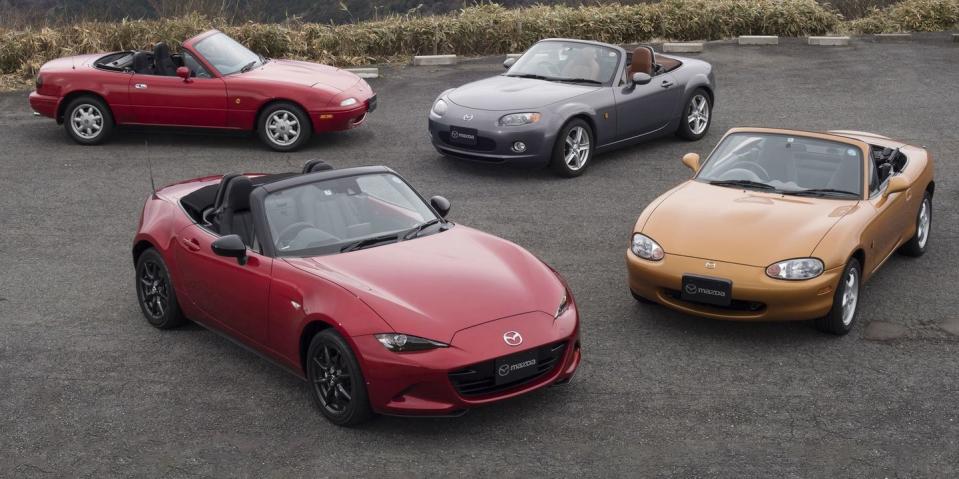
Overview
When it debuted at the 1989 Chicago Motor Show, few could have foreseen what a huge impact the little Mazda MX-5 Miata was going to have. Through more than three decades, there have been sports cars that are lighter, more agile, and certainly more powerful. But in terms of driving delight, the Miata has always punched above its weight.
In part, some of that credit isn't so much about a tried-and-tested recipe of light weight and rear-wheel-drive, but because of the Miata's sheer ubiquity: Mazda has sold more than a million MX-5s. You can find them everywhere, from Florida to Alaska, with battered Craigslist specials available in every state and province. The financial barrier to owning a Miata is a low gate, easily hopped, and there's a lot of fun to be had on the other side.
For some, Miata ownership is a stepping stone, a sort of sports-car training wheels on the way to picking up a used Corvette. For others, the joy of Miata ownership never fades. Here's a breakdown of 30-plus years of Mazda's roadster.
NA (1989-1997)
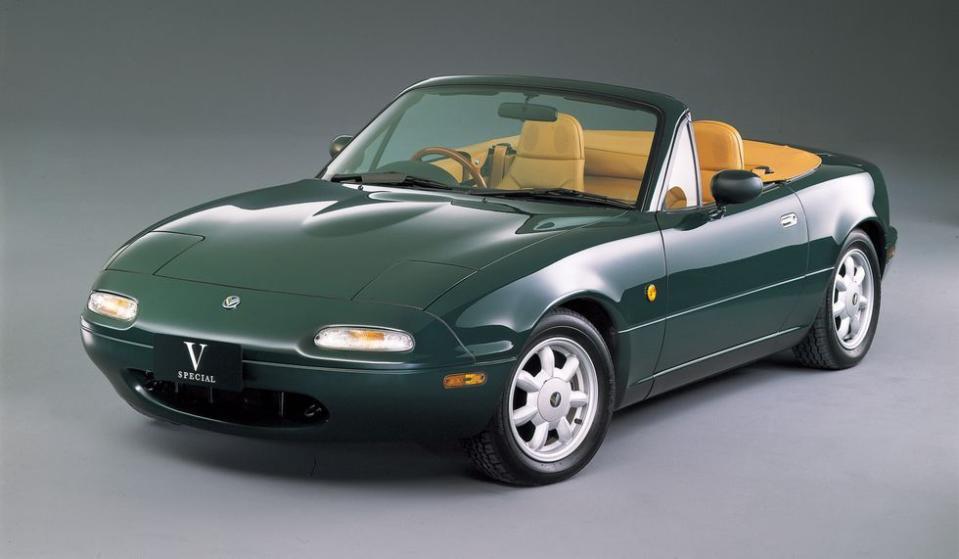
Later MX-5s became progressively more athletic, but the first-generation car is a bit like a puppy. It might not be as well-coordinated and grown-up as the rest of the bunch, but it's absolutely the most fun to fling around on a backroad.
“Miatas foster goofy; they take the air out of serious moments. Everyone needs that.” - Sam Smith, R&T 2017
This is the car that brought back the essence of the lightweight British sports car, with some much-needed reliability baked in. From the outset, it was an unqualified sales smash, with some 400,000 of them sold between 1989 (as a 1990 model year) and 1998. That makes the NA the most popular of all four generations of MX-5, and the one that remains the cheapest on the used market.
But not forever. It's not like it's a secret that Miatas are great fun on the cheap, which means that they're often snapped up as a second car and flogged to death. Finding a clean first-generation Miata, especially an unmodified example, can take a bit of hunting.
Having said that, part of the joy and delight about a Miata is that you don't have to be precious about it. Drive it in all weather, modify it, take it autocrossing and lapping, and put your dog in the passenger seat. It's just as much fun as it looks.
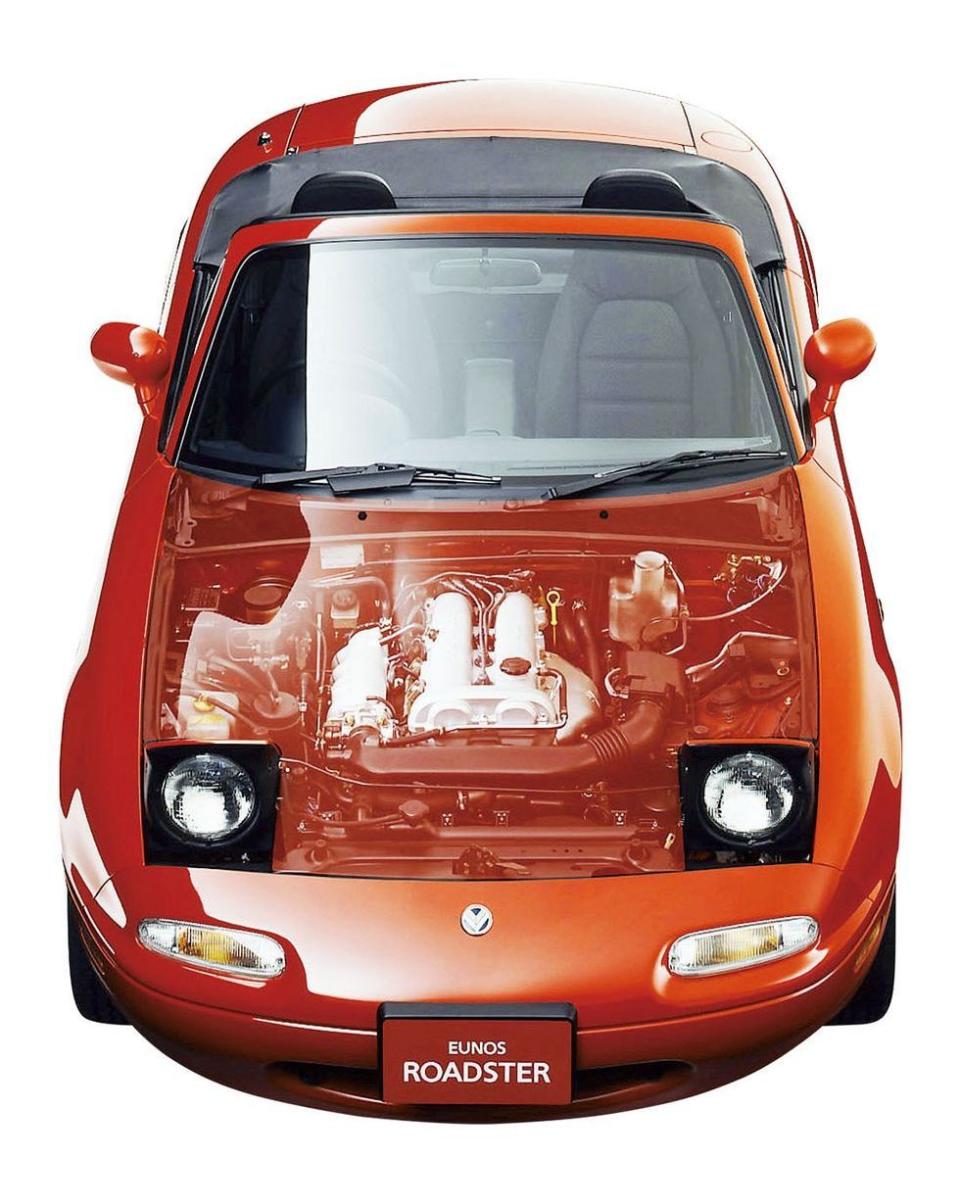
-Two engines are available. Early Miatas came with a zingy 1.6-liter four-cylinder making 116 hp; starting in 1994, the engine was a 1.8-liter with 128 hp. Both variants of NA Miata are pretty slow, despite the car's low weight (around 2200 lbs). Note that putting a lightweight flywheel in the later 1.8-liter model will give it some of the revvy character of the earlier cars, with a bit more power.
-Special Edition variants are worth more. Also starting in 1994, the Miata M Edition had a host of cosmetic add-ons like a wooden shift knob and parking brake handle. Over the years, there were many special edition Miatas, and they command a price bump over more basic models.
-Look for a limited-slip differential. Because you're reading Road & Track and not Horse and Hound or whatever, you're probably interested in flinging your Miata around a corner or two. Check to make sure it has either a viscous (1.6-liter) or Torsen-style limited slip differential. Most high-spec Miatas have them, so if you find a car with leather seats, A/C, cruise control, and other goodies, it probably has an LSD.
-Mazda still makes new parts for the NA. You can't get a full stock of new parts for your Miata, but thanks to Mazda's Japan-only (for now) NA restoration program, a host of Miata parts have gone back into production. If you're refreshing a tired car, most of the stuff you need can be picked up at your local Mazda dealership.
-The search option on Miata.net is your friend. Being one of the most popular enthusiast machines of all time means that there's a huge wealth of knowledge to draw on. Miata.net is one such repository of wisdom, but do members a favor and search first before asking a question that's been answered hundreds of times before.
-You can turn a Miata into nearly anything. Want a turbocharged track missile? Miata does that. V-8 powered neo-Cobra? Miata does that. Offroad convertible? Miata does that. The modification possibilities here are endless.
Of Note:
1989 – Some early 1990 and 1991 models suffer from the so-called short-nose crankshaft issue. This can eventually lead to engine failure, so do be a little wary of early cars with very low miles.
1990 – The Miata would prove to be particularly popular in rain-soaked Britain (go figure), and even had a dealer-fitted turbocharger option. Some 1200 BBR turbo models were built, each with a middling 150 hp. Today, there are a host of turbocharger kits for your Miata.
1993 – The 1994 to 1997 model year cars are arguably the most desirable, with a stiffer chassis, the more powerful 1.8-liter engine, and better brakes.
1991 – The first special edition Miata arrives, painted British Racing Green and fitted with Nardi accessories. At the same time, a four-speed automatic became available as an option.
1996 – A five-horsepower gain and switch to OBD-II ports are minor changes to the Miata recipe. But in the same year, Mazda also built a coupe prototype. It never made production.
2000 – The first Spec Miata race was held in February, in Northern California. A budget-minded series intended to make racing more accessible, it's part of the reason the Miata has consistently been among the most-raced cars ever made.
NB (1999-2005)
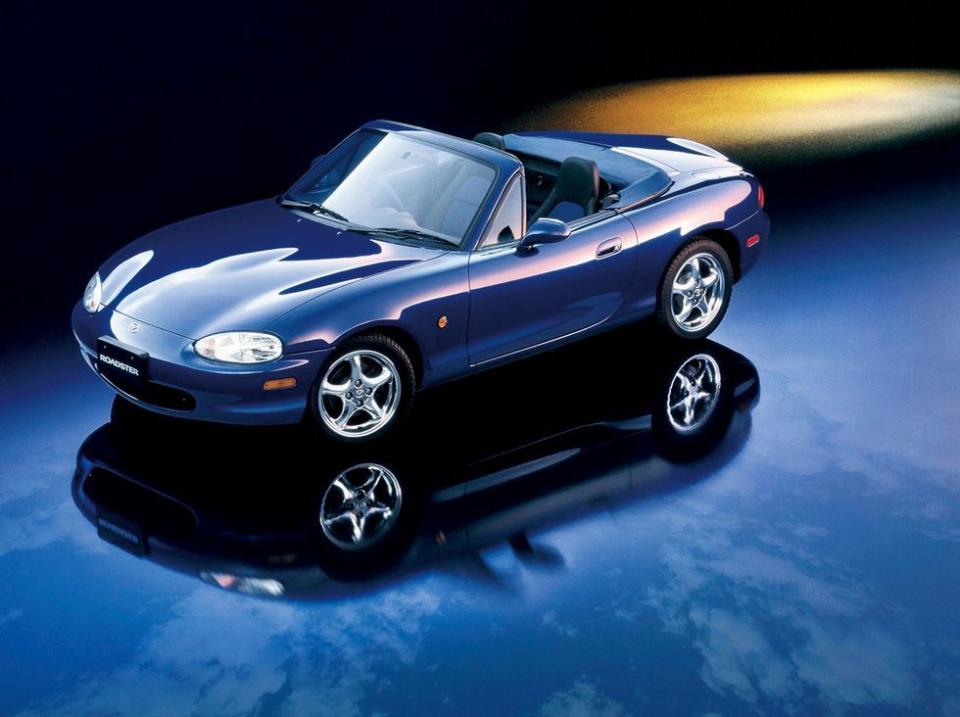
More powerful and not substantially heavier, the second generation Miata is the enthusiast's choice. It's not as lovable as the NA, with its googly eyed pop-up headlights, but the NB is just that little bit sharper to drive, and still common enough to be very inexpensive. If anything, collector demand for clean NAs means that an NBs are often a cheaper option.
Mazda kept the Miata recipe largely the same for the NB, but increased power for the 1.8-liter engine to 140 hp, improved interior quality significantly, and stiffened the chassis. Later, first with special edition models and then a subsequent facelift, a six-speed-manual became available.
Overall, the NA Miata is a better Miata, while the NB Miata is a better car, if that makes any sense. The NB is wonderful to drive, still just as easy to modify for added power and handling and, with niceties like ABS in some models, just that little bit more modern.
And let's talk about the best of them, the 2004-2005 Mazdaspeed Miata. Not particularly powerful at 178 hp, the first and only U.S.-available Miata to get turbocharging from the factory is best seen as a total package. Everything from 17-inch Racing Hart wheels to a standard six-speed manual make the Mazdaspeed very desirable.
“Fully spool the Mazdaspeed Miata's ball-bearing turbo, and 7.25 psi of boost gets packed into the combustion chambers, after a pass through an air-to-air intercooler that is framed nicely in the nose's oval intake. The result? A rousing 178 bhp at 6000 rpm and 166 lb-ft of torque at 4500, gains of 25 and 33 percent, respectively. Boost really starts to be felt at about 3500 rpm and continues strongly to the 6500-rpm redline that's 500 shy of the standard Miata's.” - Douglas Kott R&T, 2004
Unfortunately, while the Mazdaspeed was only $827 more than a mid-grade MX-5 LS, only 5400 were built in 2004 and 2005. This makes them relatively scarce, and values are high. It's probably the most collectible Miata aside from a very low mileage NA.
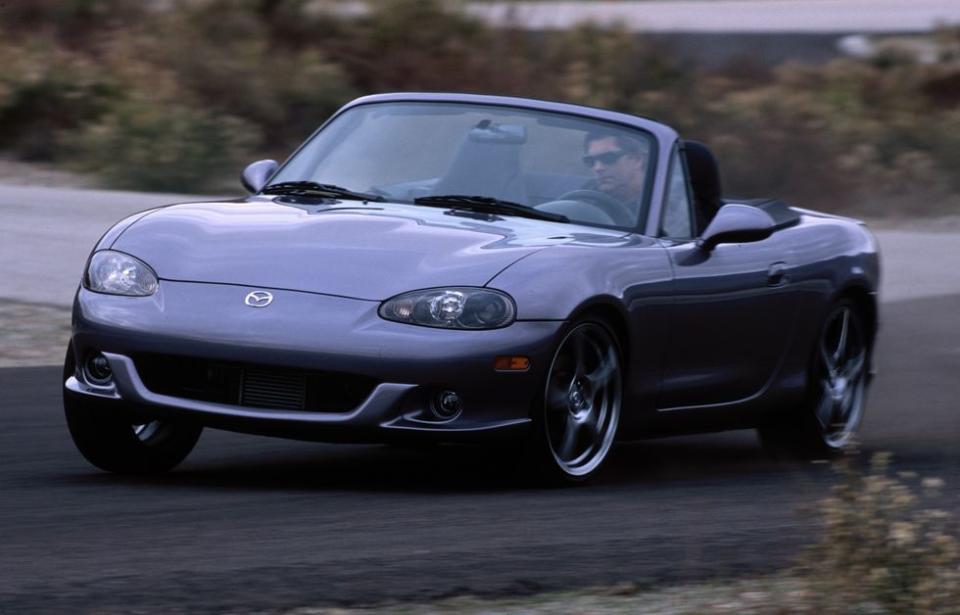
-As with the NA, rust is one of the NB's only real flaws. Mazda paint quality and steel longevity were not at their peak in the Nineties and the early 2000s. Year-round driving on salty roads without proper care can turn an NB into a colander.
-The 500,000th, and 750,000th Miatas were built during the NB era. The former was chosen by the Japanese team, and is a well-optioned version in a sort of beige. The latter is a fire-red Mazdaspeed variant chosen by the US team.
-There was a coupe. Offered solely in Japan, Mazda built a variant of the second-generation MX-5 called the NB6C. The C is for Coupe, and just 179 were made in various trims. It's a few years away from being importable into the U.S
-Australia got the most powerful MX-5 ever. The MX-5 SP, released as a 2002 model, was a 200-hp turbocharged NB that was limited to 100 units. It's quicker than the Mazdaspeed, and features tuning by Prodrive.
Of Note:
1998 – Mazda had two 1998 model year Miatas in Europe, as the last of the NAs was sold and the NB replaced it. In North America, the 1998 model year was skipped entirely. If you find a 1998 MX-5 for sale, park it next to your 1983 Corvette.
2000 – The 10th-anniversary special edition of the MX-5 got a few cosmetic upgrades and, more importantly, a six-speed manual transmission. As the NB progressed, the six-speed became a more common option.
2001 – A facelift also saw the MX-5 getting a mild horsepower bump to 143 hp in the U.S. market, thanks to variable valve timing and some other tweaks. In Japan and Europe, power was now above 150.
2003 – One of the coolest MX-5s ever made is introduced: the Miata Club Sport. Mazda only made 50 of these stripped-out specials, at the behest of the SCCA, with the original sticker price held at $19,995, and no dealer markup allowed. No stereo, no air-conditioning, no power steering.
2004 – The Mazdaspeed Miata arrives—4000 were made in 2004, but a fire at the factory meant just 1428 were made in 2005.
NC 2006-2015
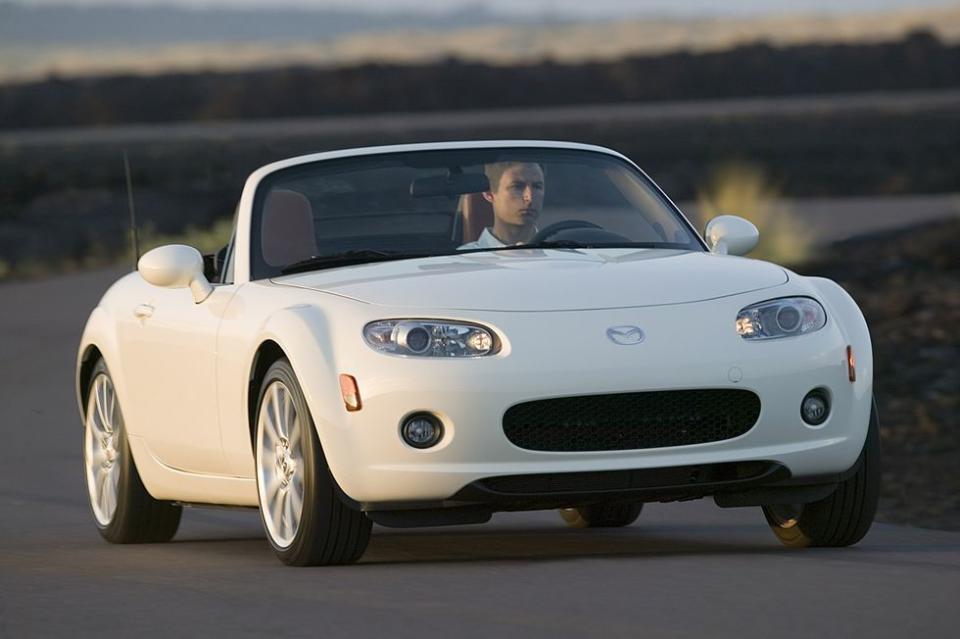
The third-generation MX-5 is the Porsche 996 of Miatas. Bigger and heavier, it's everyone's least-favorite Miata, but guess what? Everyone is wrong.
In actual fact, the NC is wonderful to drive, just overlooked. Just like the 996. Except without the potential for catastrophic bearing failure. Early models rode a little too high, and the smiley-faced styling wasn't to everyone's taste, but lower an NC over a set of sticky tires and Enkei RPF-1s, and it's a winner.
“It's got good bones, but needs some work to make it great. In stock form, the suspension is soft, and the seats don't have enough bolstering. Having driven an STR-prepped Miata in SCCA Solo, I know how good it can be.” - Shaun Bailey, R&T 2012
Further, while the power-retractable hardtop available in later models is sometimes seen by enthusiast owners as an unnecessary weight to carry around, it is a work of engineering genius. It also adds to the all-weather capability of the car and gives you a little additional security against break-ins.
Even better, the NC is new enough to be free from the neglect you can find on its ancestors—remember, most NAs are nearly thirty years old by now. And, with 167 hp and some much-needed torque from a new 2.0-liter MZR engine, the NC is still plenty quick.
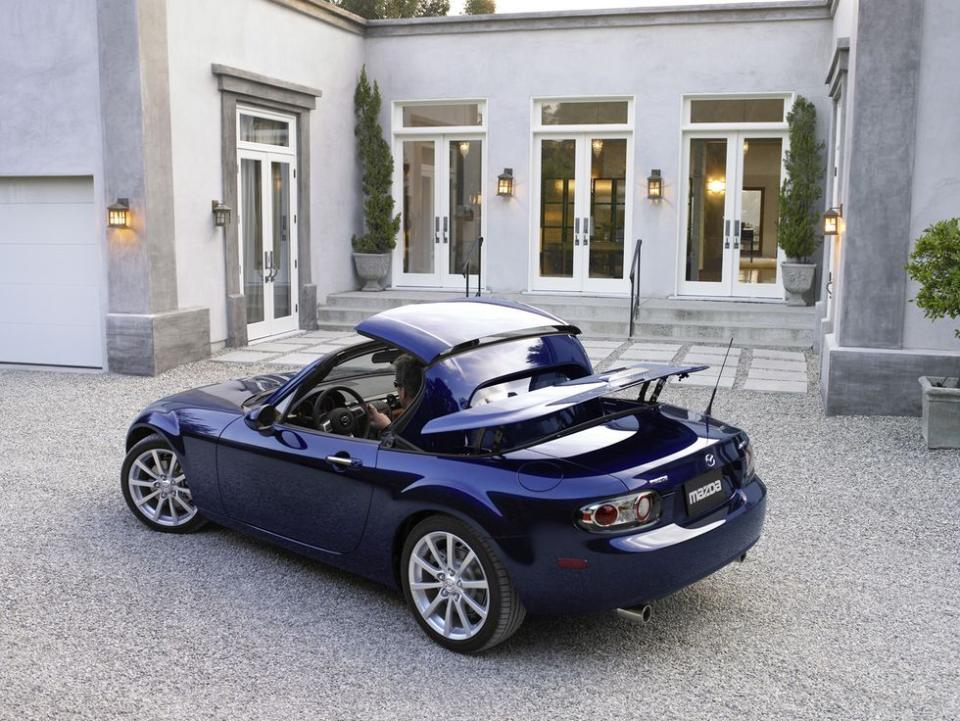
-Roomier cabin suits taller drivers. If you don't fit in an NA or NB, then an NC might work for you. It's also less claustrophobic than the later ND.
-The horsepower stays the same. Initially listed at 170 hp, changes in horsepower measurement meant a drop to 167 hp for later models. Really, the 2.0-liter MZR makes the same power year over year.
-The automatic version isn't bad either. While earlier Miatas used a four-speed auto, the NC got a six-speed that Mazda continues to use in the fourth-generation car. An automatic Miata might not be a purist's choice, but it shifts nicely.
Of note:
2006 – The power-retractable hardtop became available in August in the US market. It only weighs 100 lbs.
2006 – En route from Japan, the MV Cougar Ace developed a 60-degree list to port, resulting in the subsequent loss of several thousand Mazdas onboard. Mazda keeps a record of the VINs involved.
2008 – Sometimes called the NC2—though this term is unofficial—the facelifted NC features a comprehensive new look and a little more space in the cabin.
2009 – Designed in Frankfurt, the Superlight concept is built around the less-powerful 1.8-liter variant of the MZR, and doesn't even have a windshield. At 2200 lbs, it is still slightly heavier than a bare-bones NA.
2013 – The MX-5 Club featured some cosmetic upgrades, as well as some mechanical refreshes to the brakes and factory Bilstein dampers. Either in soft-top or hardtop form, these are among the most desirable NCs.
2014 – The 25th Anniversary Edition MX-5 featured hand-selected engine parts for a smoother and revvier engine, although no additional power. Mazda only sold 100 units in the U.S., and all were spoken for within ten minutes.
ND (2016-Present)
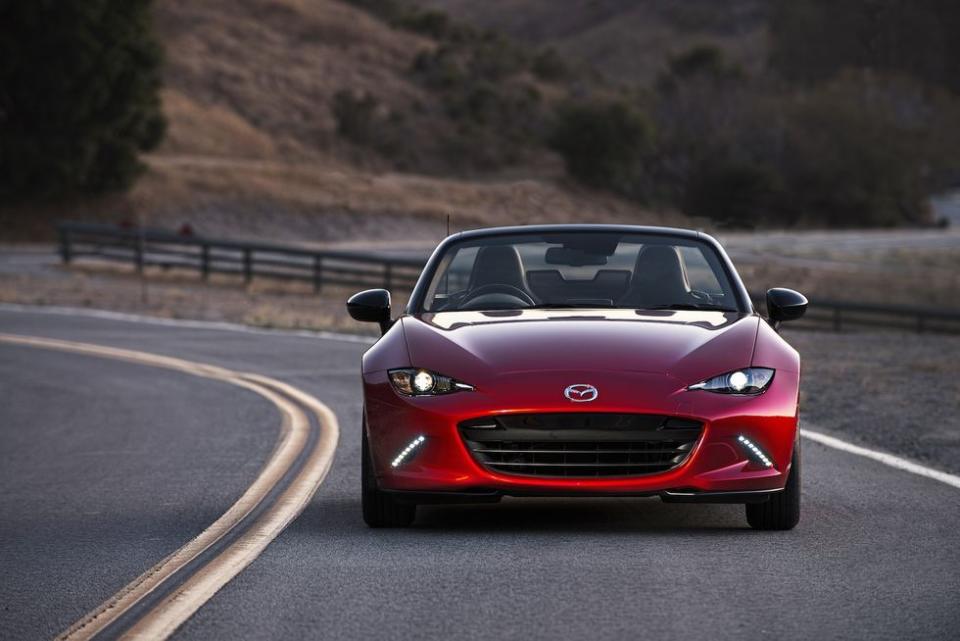
Smaller and lighter than the NC, the ND chassis MX-5 is commonly compared with the original NA. In reality, the ND is more like an NB built with the most refined approach Mazda could muster. It's not as roly-poly playful as the original Miata, and in later models is actually quite a serious little sportscar.
Which is not to say it isn't incredibly good fun. Apart from the electric power steering being less talkative than in previous Miatas, the ND is lean, athletic, and poised. The suspension is slightly soft, which can teach a novice driver a great deal about weight transfer, and is very approachable. Add a few minor suspension tweaks, and it's a wee scalpel of a thing.
With a dedicated approach to lightweighting that included hollowed-out sun visors, the first version of the ND provided an increase in performance over the NC despite being initially less powerful, at 155 hp. For the 2019 model year, the MX-5 got a power bump to 181 hp, and a higher redline.
“It's been a while since I've been this excited about a four-cylinder. The inline-four is more common—and more boring—than ever. The automotive world is filled with new four-cylinders (often turbocharged) and they all feel the same. Effective, but totally anodyne. This motor isn't. Mazda really worked to make it feel special like the best sports car engines of old. Think Alfa Romeo or Lotus-Ford twin-cam to get an idea of what I mean.” - Chris Perkins, R&T 2019
But picking either motor is fine with a chassis that's such a sparkling delight. And tipping the scales at 2345 lbs in its most recent soft-top form, the ND MX-5 was good enough to warrant inclusion at a super-shootout against the likes of the McLaren F1 and the Shelby Cobra.
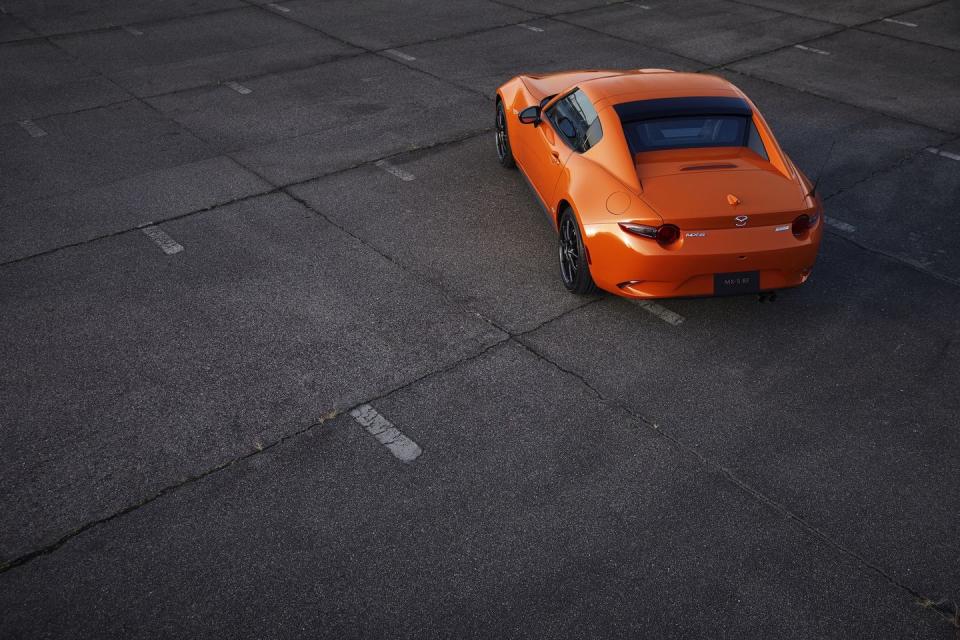
-The cupholders are terrible. Or possibly great. The fact that they're an afterthought tells you all you need to know about this car's intent.
-RF folding targa models don't offer much of a penalty. With the 181-hp engine, the weight of the folding mechanism only represents about a 5-hp penalty. As with the NC's power hardtop, the added curbside security might fit your needs better, though installing a roll bar in an RF makes the car effectively a coupe. Wind buffeting with the top down is also worse than with the soft top.
-The manual soft-top version is a piece of art all by itself. Capable of being folded in just seconds at a light, the ND's folding canvas roof will have you dropping the top any time the rain lets up for a few seconds.
-The 1.5-liter engine available in Japan and Europe is fun, but the 2.0-liter is better. The current 2.0L takes everything that's good about the overseas-market 1.5-liter and adds the power you need for U.S. highways.
Of note:
2015 – The Fiat 124, fitted with an FCA-sourced 1.4-liter turbocharged engine, brings al fresco motoring with Japanese reliability. Not quite as pretty or fleet of foot as the MX-5, the 124 was still fun to drive.
2015 – The ND platform MX-5 Cup Car is introduced as a turn-key racing machine. It weighs just 2100 lbs, and is equally addictive as the best racing machines from Porsche or BMW.
2016 – The RF model is introduced, combining the best attributes of a hardtop MX-5 with push-button folding. Heavier than the soft-top, but only marginally.
2016 – The Millionth Miata goes on tour. A right-hand-drive Japanese model, it will be signed by thousands of people as it travels around the world.
2018 – The Yamamoto Signature edition is one of a series of Italy-only MX-5s. It's named after ND project lead Yobuhiro Yamamoto, an engineering legend at Mazda who also worked on the FD RX-7, and the the 787B that won the 24 Hours of Le Mans in 1991.
2019 – Swathed in Racing Orange paint and fitted with Brembo brakes, Recaro seats, Bilstein dampers, and 17-inch forged Rays wheels, the 30th Anniversary MX-5 is a celebration of performance. The 500 models initially slated for the U.S. sold out in hours, so Mazda brought an extra 143 for customers on a waitlist.
2020 – Last year, the MX-5 received the 100th Anniversary treatment as Mazda celebrated its centenary.
Collectability:
Each generation of Miata has its must-have collectible models, with the NC variants being the least collectible for the foreseeable future. For the NA, an unmodified Special Edition or M Edition roadster is a great way to have an affordable classic car that won't let you down mechanically. NAs painted in rare colors like Sunburst Yellow and Laguna Blue are worth seeking out, too.
The obvious choice in the NB is the Mazdaspeed version, with the lightweight Club Sport being something of a holy grail. Don't ignore stuff like the 10th Anniversary Edition, however, even if Nineties-spec “add-ons” like chrome wheels aren't your thing.
NC and ND MX-5s aren't so much collectible as they are usable, with the exception of the limited anniversary editions. High-specification cars will hold value the best, however, and watch for Mazda to release any further special-color ND models as time goes on.
The Ones to Get
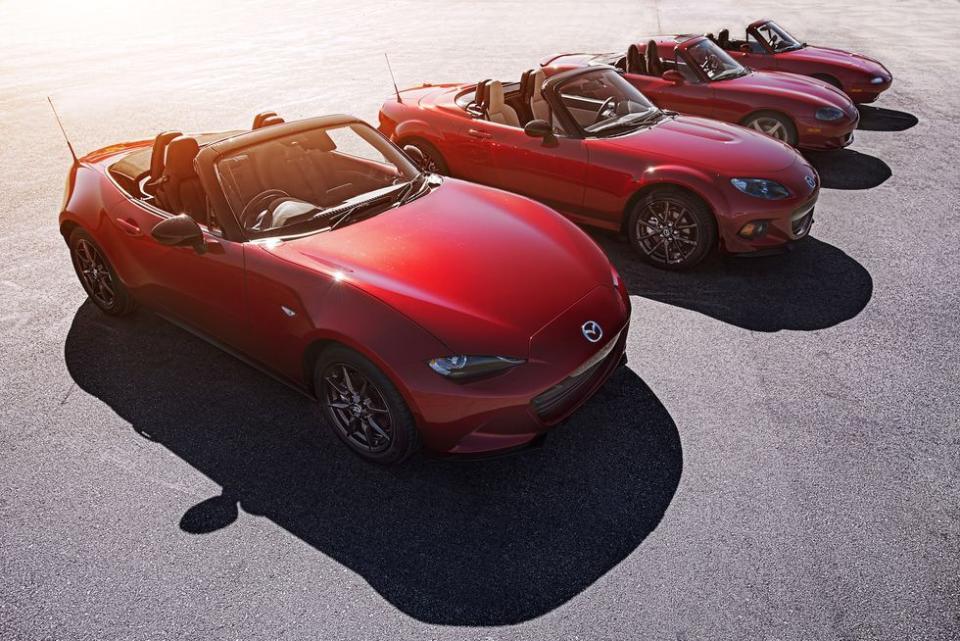
A later 1.8-liter NA with improved braking and chassis stiffness, and a Torsen limited-slip differential is the ideal early performance-oriented Miata. Wait for a good color.
Don't be afraid of modifications, but do educate yourself. You can save a lot of money by buying an MX-5 that needs only a few tweaks to finish off someone else's turbocharged track build.
The Mazdaspeed Miata might not be the best basis for a turbo-NB build, but your money is safe. With a lower redline and no variable valve timing on the Mazdaspeed, you might want to build your own turbo-NB from scratch. However, being so rare and desirable, a factory-spec Mazdaspeed will probably appreciate rather than depreciate.
If you can find a bargain on an NC Club Sport, buy it. It's the best bang-for-buck of the modern Miatas.
Unless you can get a 155-hp ND at a steal, it's worth waiting for a version with the improved engine. It's not just the power bump, but the higher redline really makes the car feel that much more special.
Notable Issues / Problems
Rust is murder on NAs and NBs, if they've been driven in winter conditions. It can be repaired in some cases, but it's the largest issue with both cars.
As-mentioned, some early NAs can have timing issues because of crankshaft problems. Most of these have already exploded, but perhaps don't trust a low-mileage 1990.
The plastic rear window in NA tops can fade, discolor and crack.
NBs occasionally have clutch issues from weak thrust bearings and, in later models, clutch chatter. Both are easily remedied while doing an overhaul.
Suspension components can get tired. Not just dampers, but all the bushings on a Miata can get worn out or perished. Precisely because they're not expensive cars, deferred maintenance can be an issue.
NC Miatas are largely reliable, but buying an early one means you should probably address the too-tall ride height and body roll with a comprehensive solution.
ND has very few issues, but one weird one for new vehicles that keeps cropping up is cars being delivered with delivery tire pressure. To prevent flat spots, Mazda ships their cars with higher pressure than recommended for road use. Sometimes dealers can miss resetting this before delivery.
You Might Also Like

 Yahoo Autos
Yahoo Autos 